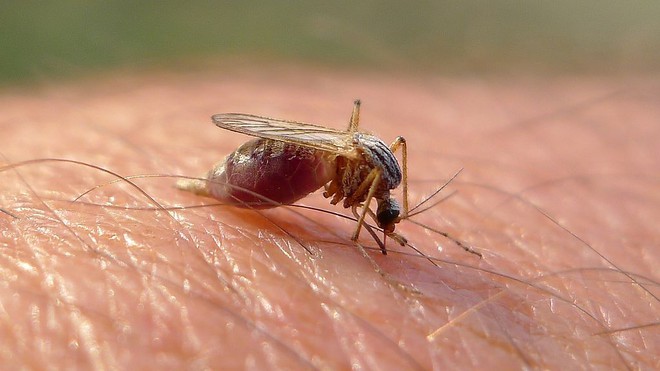A suspected car thief has been caught – thanks to DNA taken from blood found in a mosquito.
In the world of detectives, the tools that often evoke images of the profession are the magnifying glass, the fingerprint brush, and the flashing green light. But sometimes the most unlikely details come in the most unexpected forms. This is the story of how a tiny mosquito proved to be the key to solving a car theft in Finland, leaving a remarkable mark in the annals of forensic science.
Picture this: a crisp morning in Finland in 2008. Police officers in Seinaejoki are inspecting a recently recovered stolen car, frustration etched on their faces. The usual clues—fingerprints, witnesses, alibis—have yielded no results in finding the car thief. Just as they are about to end their day of fruitless work, Inspector Sakari Palomaeki suddenly bursts into laughter. It turns out he has discovered a small, dead mosquito on the car’s upholstery, barely visible to the naked eye.
Palomaeki later recalled in an interview that the mosquito looked quite “plump,” which got them wondering. What if the mosquito had bitten the culprit? And what if, thanks to the wonders of modern science, the amount of blood the mosquito carried might hold the key to identifying the thief?
With a glimmer of hope, the police sent the mosquito to the National Bureau of Investigation in Helsinki. There, under the watchful eye of forensic scientists, the blood from the mosquito’s abdomen was subjected to a rigorous DNA analysis. A few days later, the results came back, and it left everyone speechless. The DNA profile matched a suspect already in the police database for other crimes.
“The use of mosquitoes in investigations is not common. During training, we were not taught to keep an eye out for mosquitoes at crime scenes,” Palomaeki shared.
“It’s not easy to find a small mosquito in a car, which just shows how thorough the crime scene investigation is,” he added.
The suspect denied stealing the car and claimed he was just hitchhiking with a man. However, with this new evidence, police were able to arrest the suspect. Years later, it remains unclear whether the man was ultimately convicted.
A study has shown that human DNA can be isolated from mosquito blood. A mosquito can feed within 106 meters of a location and can only fly 170 meters. This means that mosquitoes within a certain range of a crime scene can provide evidence to identify the culprit. In fact, solving crimes by relying on mosquitoes has appeared in other parts of the world.
In 2022, police in Fuzhou, China, found the culprit in a burglary thanks to traces of DNA from blood left by two dead mosquitoes. The robbery occurred on June 11 when the robber broke into a house at 1 p.m. and stole many valuables. However, the thief cooked egg noodles to eat and slept overnight at the scene, leading to the mosquitos sucking his blood. After collecting a blood sample and analyzing the DNA, the result matched the DNA sample of a person surnamed Chai, who was later arrested on June 30 and admitted to being the criminal.
Forensic scientists can test human blood from mosquito stomachs and compare it with DNA to determine who was bitten. The technique could help police figure out who was at a crime scene and, in the future, provide evidence that could be used to convict a criminal. But questions remain about how long it takes mosquitoes to digest human blood, and how long it takes for the DNA to become unrecognizable. A team from Nagoya University showed that human blood extracted from mosquitoes can still be analyzed for DNA (up to two days after the blood meal).
“We asked some volunteers to let mosquitoes bite them,” explains study author Yuuji Hiroshige. “After allowing the mosquitoes to digest blood for a certain period of time, we extracted human DNA and used PCR to amplify the sample for quantification and genotype determination.”
![]()
Polymerase chain reaction, or PCR, is a standard tool in forensics for amplifying small amounts of DNA. A piece of DNA can be multiplied thousands or even millions of times. Researchers can then use the amplified samples to figure out how much DNA is left after a mosquito feeds and who it belongs to.
By examining the DNA in blood digested by two different species of mosquitoes over a period of time after feeding, the team was able to trace each volunteer’s blood sample even two days after digestion in the mosquitoes. And after about three days, the mosquitoes can completely digest the blood, at which point the DNA cannot be identified.

